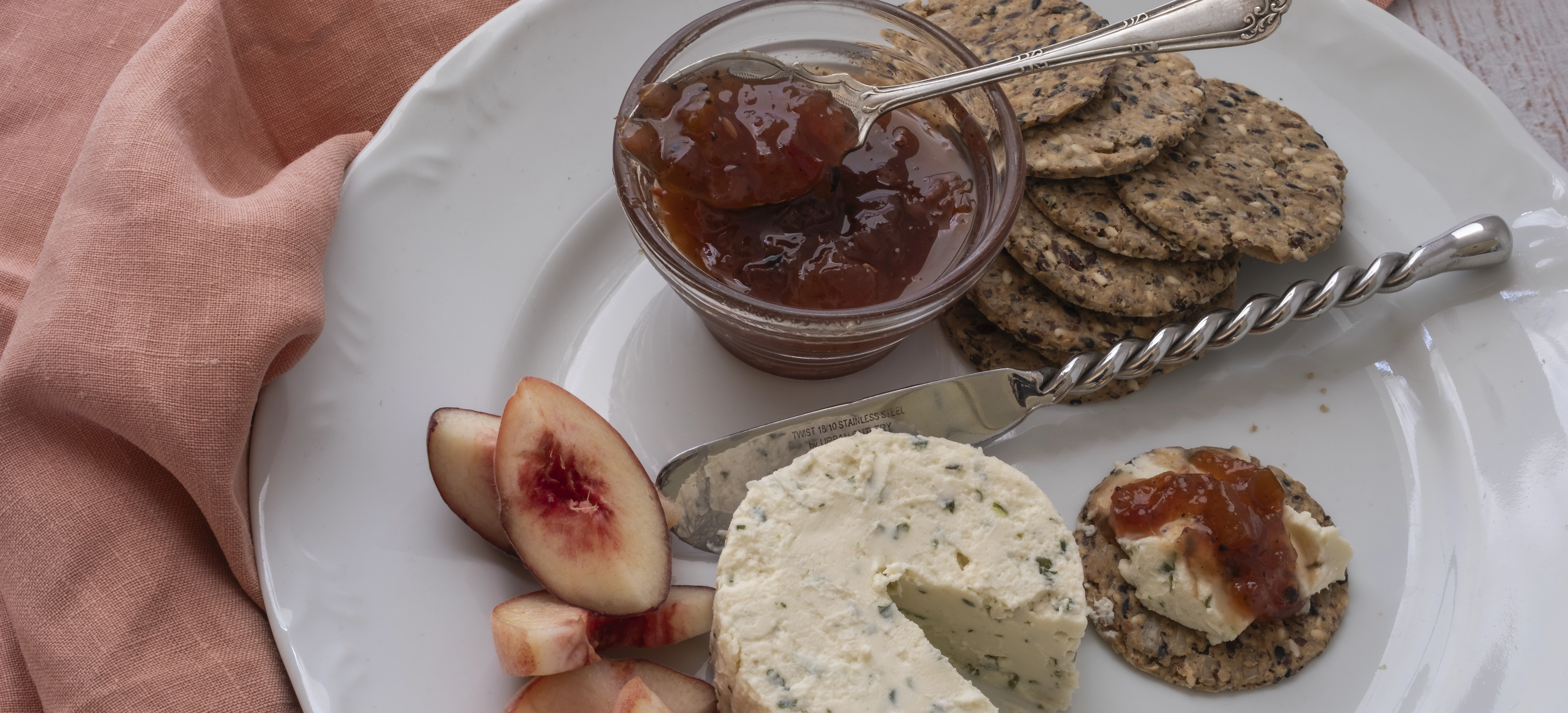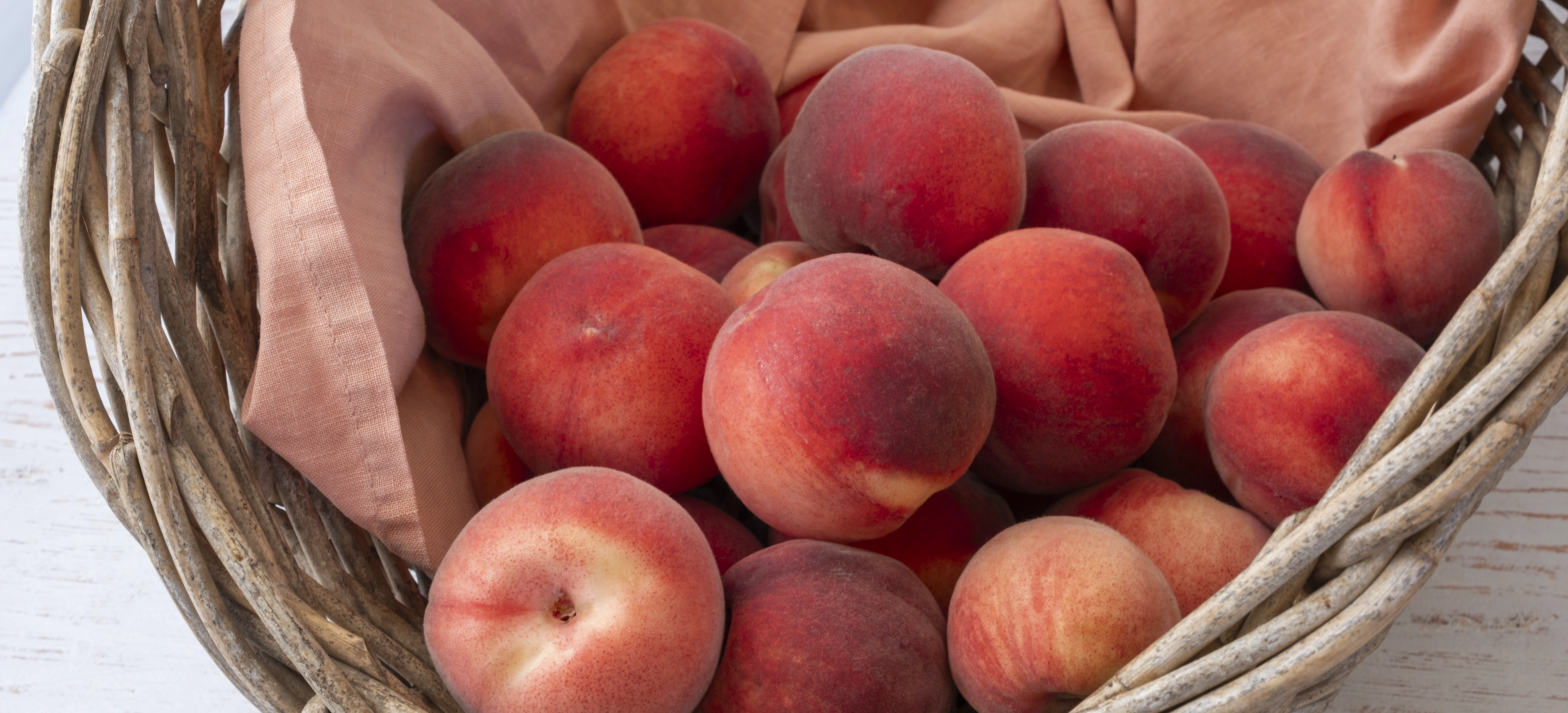Spicy Peacharine Chutney
- Pickles, Chutney, Relish & Sauces

This spicy, rich flavoured chutney, made from a combination of yellow peaches and nectarines, is a celebration of summers stone fruit. Its versatility extends beyond being a traditional accompaniment to duck, ham, pork, turkey, and chicken. Team it up with sandwiches and wraps, vegetable frittata’s, pancakes, and patties, on your next cheese platter, ploughman’s lunch, antipasto, or charcuterie board. It’s a bottle of sunshine, that captures the fresh, lively flavours of summer with the rich, warm, and earthy flavours of mace and allspice. And by the way, a nectarine is just a smooth skinned peach. I didn't search out peacharines, which really do exist as they are a cross between the peach and nectarine, I just used a combo of peaches and nectarines to make this delicious chutney.
- Preparation Time:
- 30 minutes
- Cooking Time:
- 40 minutes
- Quantity:
- 7 x 200 ml jars
INGREDIENTS
- 950 ml
- Apple cider vinegar
- 550g
- White sugar
- 1 teaspoon
- Allspice, ground
- 1 teaspoon
- Mace, ground
- 450g
- Yellow peaches, ripe
- 450gm
- Yellow nectarines, ripe
- 2
- Brown onions, medium
- 5
- Garlic cloves, fresh
- 5 cm
- Ginger root, fresh
- 2
- Red chillies, fresh
- 1 teaspoon
- Salt

METHOD
Yellow peaches and nectarines will produce a more flavoursome and chunky style chutney
In a large stainless steel preserving pan or heavy bottom stainless steel pot, add the vinegar, sugar, allspice and mace and heat gently. Stir continuously until the sugar is dissolved.
Peel, stone and cut the peaches and nectarines into large chunky pieces, approximately the same size. If the stone fruit is ripe, the skin will easily peel away. If assistance is required, use a vegetable peeler.
Peel and finely chop the onions and garlic, peel and grate the ginger. Cut the chillies in half and finely chop. If you want a milder chilli heat to the chutney, remove the seeds with a teaspoon and discard. Refer to the Notes Section: Handling Chillies below
Place all these ingredients plus the salt into the vinegar preparation.
Bring the mixture to the boil, stirring occasionally, then reduce the heat and simmer for 40–50 minutes until the chutney has thickened.
Stir the mixture frequently to prevent the fruit from sticking to the bottom of the pan.
Use a funnel to pour the cooked chutney into dry sterilised screw cap sealable bottles, fill to approximately 2.5cm (1 inch) from the top of the bottle and seal. Allow to cool and label and store in a cool dark place in the kitchen or pantry.
Allow the chutney to mature for at least 2 weeks before eating.
NOTES
- Choose clean ripe fruit. Do not use overripe and never use mouldy fruit as this will produce a poor-quality chutney.
- If the peaches are medium ripe the skin will peel off easily. Use the same technique used to peel a banana. Discard the skin. You can leave the skin on but there will be pieces of cooked skin throughout the chutney. It is still edible but will not look as elegant as chutney where the skin has been removed.
- Cutting the fruit approximately the same size produces a more evenly cooked chutney consistency. Cut the fruit larger if you like a chunkier style, or for a smoother texture, cut the fruit into smaller pieces.
- The cooking time is an approximation only. Cooking time will depend upon:
- the size of preserving pan-the broader the pan and quicker the evaporation,
- degree of fruit ripeness– the riper the fruit, the sweeter and juicer the initial chutney will be and
- the degree of heat when cooking–the higher the heat, the greater the boil which will produce greater evaporation.
- Types of sugar & Vinegar
- The type and colour of the sugar and vinegar used will affect the final colour and flavour of the chutney. Malt vinegar and brown sugar will produce very dark brownish red chutney with a more earthy/molasses background flavour, while white wine vinegar or apple cider vinegar and white sugar will produce chutney that has a fresher and brighter fruit flavour. This is a matter of personal choice.
- Take care to only use vinegar which has a 5% minimum acetic acid content. The acetic acid content acts as the principal preservative, and any lower quantity will compromise the safety of your preserves. Commercially available vinegar is 5%, however most homemade vinegars do not achieve this level. For this recipe I have specifically chosen white sugar and apple cider vinegar to retain a fresh bright coloured chutney.
- Handling chillies. It's important to wash your hands thoroughly after handling and de-seeding chillies. Chilli oil is easily transferred from the chillies to hands. If you touch your eyes or any delicate areas, the chilli oil will be transferred on contact and create a burning sensation.
- To test the chutney is cooked to the right consistency, spoon a little of the mixture on to a plate. The chutney should hold its shape and all the fruit and onion should be cooked
- Towards the end of the cooking process, it may be necessary to stir regularly. It is important that the fruit does not stick to the bottom of the pan and burn. Your chutney will be tainted with a burnt flavour and is not very pleasant.
- Good quality jars should be used in all preserving, particularly when they are processed in a hot water bath. Thin jars often cannot withstand the temperatures and may crack either in the bath or on and or after removal. Avoid the disappointment and invest in some good jars from a homewares or preserves outlet. Select jars that have non-reactive lids as the vinegar solution can cause the lids to rust over time.
- Peaches and Nectarines: Clingstone, freestone, white or yellow – what’s the difference.
- Peaches and nectarines are classified as a stone fruit as their ripe luscious fruit surrounds a central pip which further encases its seed. While both will soften after harvest, they will not ripen and further develop their sweetness and colour. For a full flavour, sweet, luscious, flavoured peach, or nectarine, pick when ripe straight from the tree or purchase at a local farmers market or farm-gate stand.
- They are either a freestone or clingstone variety and have either a white or yellow flesh. The clingstone has a stone/pip which clings to the fruit and is not easily removed. As the stone is not edible, the fruit flesh has to be eaten or cut away. Whereas the stone is easily removed from the fruit in the freestone.
- White peaches and nectarines have a more delicate flavour and a floral sweetness. The flesh is also delicate and easily bruised. It is best eaten fresh as when its cooked it tends to become mushy, and its flavour is easily overpowered by the other ingredients. The yellow peach has a more intense flavour, has a strudier flesh and is more suitable for cooking and preserving.
- What’s the difference between a relish and chutney? A relish is usually made with fruits that are cut into smaller pieces, more frequently made with white or cider vinegar, generally made with a lower proportion of vinegar and sugar and cooked for a shorter time. This results in a lighter flavour with a fresher, crisper consistency.
- Allspice (Pimenta diocia)
- Also known as Jamaican pepper, clove pepper, pimento
- Allspice come from an evergreen tree in the myrtle family. Twigs bearing the berries are picked in summer when the berries are mature but still green. Berries are sweated in containers to release their active ingredients then dried. Whole berries retain their flavour well and will keep almost indefinitely sealed in a cool dark place. They contain a rough surface which contains tiny oil glands and most of the flavour is contained in the wrinkled husk, not the seeds
- Allspice powder quickly loses potency. Best to buy in small quantities and keep sealed in cool dark place for up to 6 months.
- Suits both sweet and savoury dishes.
- Mace (Myristica fragrans)
- Mace is obtained from a tropical plant that also provides nutmeg. The seeds sheath-like covering is used to produce mace, while the inner seed kernal is used as nutmeg. Mace is a sweet, warm, and aromatic flavouring. It can substitute nutmeg in most sweet dishes; however, it is used principally to flavour savoury sauces and meat and is used in making pickles and chutneys. Mace has a gentler and rounder flavour than nutmeg, however both can develop an unpleasant flavour with prolonged heat.
- Mace can be purchase ground or whole and is generally referred to as ‘blades of mace.’
